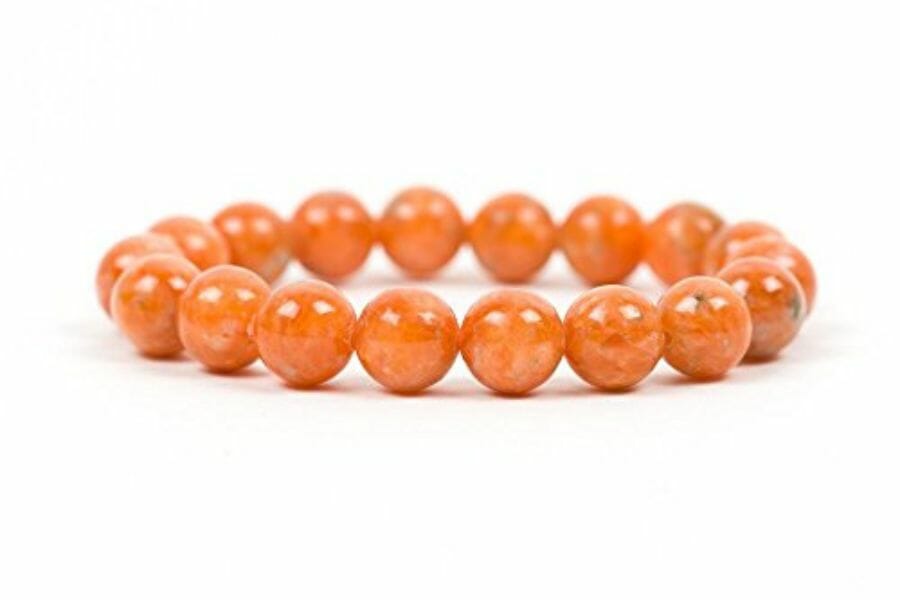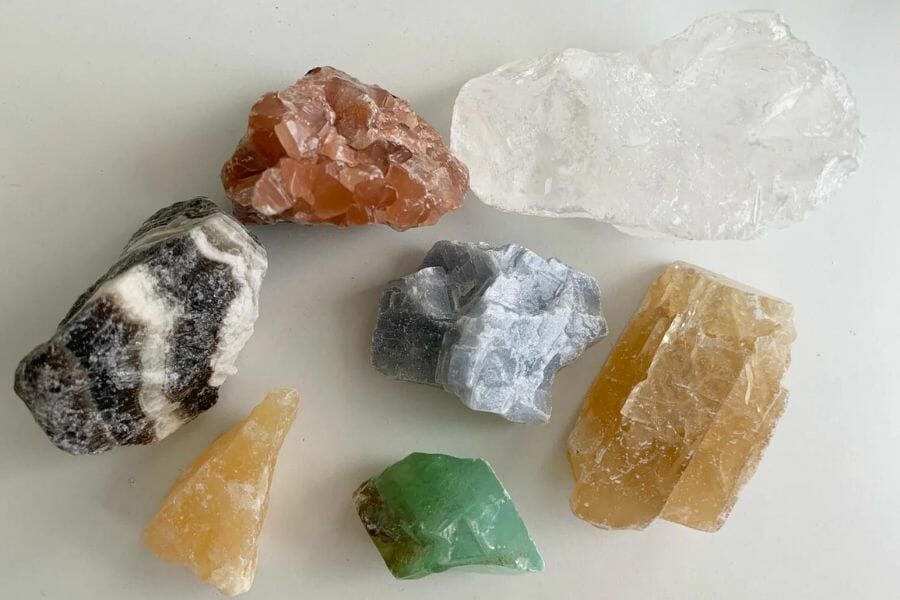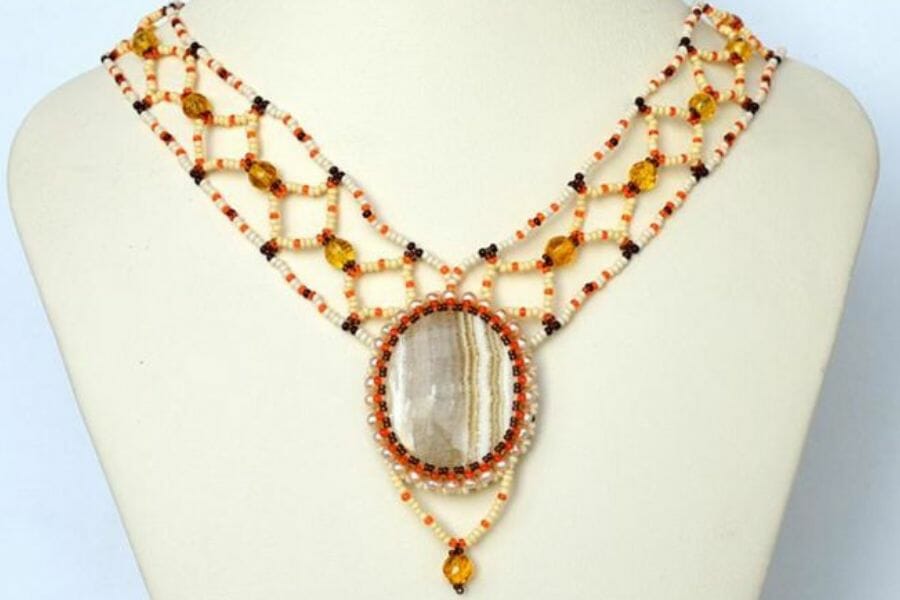Calcite is revered for its stunning variety of colors, crystal forms, and magnetic optical properties. Found in many environments, from caves to hot springs and even coral reefs, its versatility has earned it a special place in the mineral kingdom.
But what truly sets calcite apart, and drives its value, is its unique power to captivate the senses. The fiery hues of red calcite, the ethereal blue of cobaltian calcite, and the gentle glow of honey calcite—each possesses its allure, making it a prized possession for collectors and crystal enthusiasts.
The worth of calcite is not solely based on its aesthetics. It has practical applications, too, playing an essential role in producing cement, fertilizer, and even toothpaste. This article will delve into this extraordinary gemstone’s alluring beauty, value, and worth, shedding light on why it’s held in such high esteem.
Let’s explore the many facets of calcite’s value, price, and worth. We’ll uncover the stories behind these beautiful crystals, delving into the factors that have shaped their enduring appeal. Rest assured, this mineral’s spellbinding charm will leave you spellbound.
What Calcite Is
Calcite is a mineral that belongs to the carbonate group, which also includes minerals such as aragonite, dolomite, and magnesite. It’s commonly found in sedimentary rocks such as limestone and often forms in clear, rhombohedral crystals. However, it can also take on a range of colors and shapes, depending on the impurities present during its formation.
Calcite is a versatile mineral that is used in a variety of industries. Its most common application is in the construction industry, where it is used as a building material for walls, floors, and countertops. It’s also used in cement production, as a flux in the production of steel, and as a raw material for manufacturing chemicals. Calcite has many uses beyond construction and industry and is highly valued for its beauty as a gemstone and its therapeutic properties in alternative medicine.
Below is a list of all the many colors of calcite. Although calcite can come in various colors and contains numerous trace elements, these are the most common ones readily available.
White Calcite

White calcite is a variety of calcite commonly found in sedimentary rocks such as limestone, marble, and chalk. It’s composed of calcium carbonate and has a distinctive milky white color that is often translucent, allowing light to pass through it. White calcite forms in various shapes and sizes, including rhombohedrons, prisms, and scalenohedrons.
White calcite is a popular mineral among collectors and is often used for decorative purposes due to its translucent nature and striking appearance. It has been used for ornamental sculptures and architectural elements such as columns and facades. White calcite has also been used for its therapeutic properties, particularly in alternative medicine, where it’s believed to promote emotional healing and balance.
How much is white calcite worth
Each type of white calcite has a different price because they all have distinctive traits. You can find it between $5 to $35 per carat, depending on the size and quality.
Blue Calcite

Blue calcite is a variety known for its beautiful light blue color. It’s a carbonate mineral typically found in sedimentary rocks such as limestone and often takes on a distinctive scalenohedral crystal structure.
Blue calcite is composed of calcium carbonate and is relatively soft, with a Mohs hardness rating of 3. It can be found in various shades of blue, ranging from pale baby blue to vibrant sky blue, and can have a translucent or opaque appearance.
Blue calcite is highly valued for its therapeutic properties and is believed to be a powerful emotional healing stone. It’s said to help soothe anxiety, promote calmness, and provide communication aid, making it a popular choice among those seeking emotional and spiritual healing.
How much is blue calcite worth
Blue calcite comes in a range of prices because each has unique characteristics. The price per carat can range from $5 to $35, depending on its properties.
Green Calcite

Green calcite belongs to the calcite family, a group of carbonate minerals distinguished by their rhombohedral crystal structure. Exhibiting an enchanting shade of green that can range from pale to vibrant, this semi-precious gemstone is often associated with emotional healing and revitalizing one’s spirit.
Its verdant hue results from minute amounts of iron or manganese inclusions within the crystal lattice, which impart a unique coloration to the otherwise colorless calcium carbonate base. The mineral is frequently found in sedimentary and metamorphic rocks, such as limestone and marble, and can form large, well-developed crystals or more compact, granular masses.
How much is green calcite worth
Because each green calcite is different, they all have different costs. Depending on size and quality, they can range from $5 to $35 per carat.
Orange Calcite

Orange calcite is a gemstone with a vibrant orange hue ranging from pale apricot to a deep, rich shade. The distinctive coloration can be attributed to trace elements or inclusions within the calcium carbonate crystal lattice, such as iron or manganese. Orange calcite is commonly found in sedimentary rocks like limestone and marble and in hydrothermal veins.
Many energy practitioners utilize orange calcite for meditation and spiritual work, claiming it can help break through old patterns and emotional blockages, promoting a sense of renewal and personal growth. The mineral’s eye-catching color and translucent to transparent appearance make it a popular choice for jewelry and decorative pieces.
How much is orange calcite worth
Because each carnelian onyx has distinct characteristics, each has different pricing ranges. Depending on the size and quality, they can sell for around $5 to $35 per carat.
Why Calcite Is So Expensive

Calcite is a ubiquitous mineral, often forming in different types of rocks and environments, and comes in various colors, such as blue, green, orange, pink, and yellow. Its value lies in its unique optical properties, hardness, and metaphysical attributes.
One of the calcite’s notable characteristics is its double refraction, also known as birefringence, which splits a ray of light into two as it passes through the crystal. This property makes it useful in polarizing microscopes, optics, and lenses and has been used in many fields, including science, medicine, and the manufacturing of LCD screens.
It’s believed that calcite can help with emotional healing and spiritual growth, promoting feelings of peace, clarity, and confidence. Each color variation of calcite is associated with specific healing properties, such as blue calcite for communication, green calcite for balance and harmony, and orange calcite for creativity and self-confidence.
The various properties of calcite have made it a highly valued mineral in multiple fields, from science and medicine to jewelry and energy work. Its optical properties, hardness, and metaphysical attributes make it a versatile and valuable mineral that collectors and enthusiasts worldwide appreciate.
We understand that it can be confusing to differentiate calcite from other rocks and minerals. That’s why we’ve created easy-to-follow guides to help you determine if what you have is indeed calcite:
How To Determine The Value Of Calcite

Calcite prices are impacted by many factors, which can help buyers make informed decisions. The following factors are the primary determinants of calcite’s value:
Color
The color of calcite is a significant determinant of its value. Typically, more vivid and intense hues are more valuable than those with lighter or duller shades. For instance, blue and orange calcite are highly sought after and more expensive than other colors.
Clarity and transparency
The clarity and transparency of calcite also affect its price. With fewer inclusions, blemishes, and higher transparency, calcite is typically more valuable than specimens with visible cracks, fractures, or other flaws.
Size
The size of a calcite specimen can significantly affect its price. Generally, larger samples are more valuable than smaller ones, especially if they are well-formed and free from damage.
Rarity
The rarity of a particular calcite variety can also influence its price. Some types of calcite are found only in specific locations or occur in small quantities, making them more valuable and sought after.
Condition
The condition of a calcite specimen, including its preservation and overall appearance, can also affect its price. Well-preserved, unaltered models with attractive features are more valuable than damaged or altered ones.
Market demand
Market demand is an essential factor that can affect the price of calcite. If a particular type of calcite is currently in high demand, its price may increase, while the cost of less popular varieties may decline.
Calcite Price By Color

The price of calcite can vary widely depending on several factors, such as color, size, rarity, and condition. Generally, smaller specimens can range from a few to tens of dollars, while more significant, high-quality specimens can cost hundreds or even thousands. The price of calcite is also influenced by market demand, which may fluctuate over time.
| Color/Type | Location | Price (Per Carat) |
| White Calcite | Any | $5 – $35 |
| Blue Calcite | Any | $5 – $35 |
| Green Calcite | Any | $5 – $35 |
| Orange Calcite | Any | $5 – $35 |
It’s best to get the advice of a qualified gemologist or appraiser who can assess the stone based on the considerations above to estimate the value of a certain calcite gemstone or jewelry item.
Calcite pricing by unit of measurement
| Measurement | Price |
| A carat of calcite | $5 – $35 |
| A gram of calcite | $30 – $180 |
| An ounce of calcite | $710 – $4,960 |
| A kilogram of calcite | $25,000 – $175,000 |
| A pound of calcite | $11,340 – $79,380 |
| A ton of calcite | $22,679,650 – $158,757,380 |
How To Get An Appraisal On Your Calcite

To get an appraisal for a piece of calcite, determine the type of calcite you have and assess its quality based on factors such as color, size, condition, and rarity.
Look for a qualified appraiser with experience and expertise in appraising minerals and gemstones. You can check with local gem and mineral clubs or search for professional appraisers online, like the National Association of Jewelry Appraisers (NAJA). Choosing a reputable and qualified appraiser is essential to ensure that you receive an accurate and reliable appraisal of your calcite specimen. An assessment can be helpful if you want to sell your calcite specimen or insure it for its total value.
Provide the appraiser with as much information as possible about your calcite specimens, such as their type, size, color, condition, and any history or provenance you know. The appraiser will evaluate your calcite specimen based on market value, rarity, and condition and estimate its worth.
Once the appraisal is complete, the appraiser will provide you with a detailed report of their findings, including an estimate of the value of your calcite specimen.


